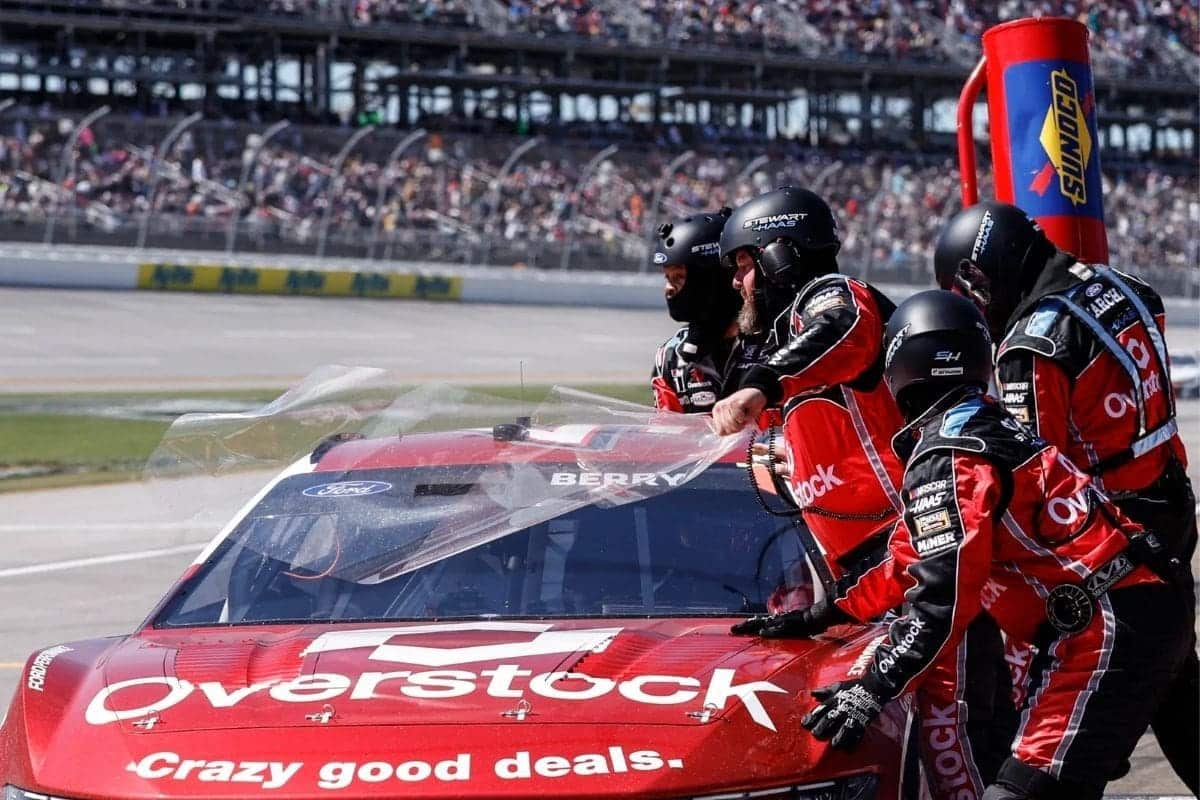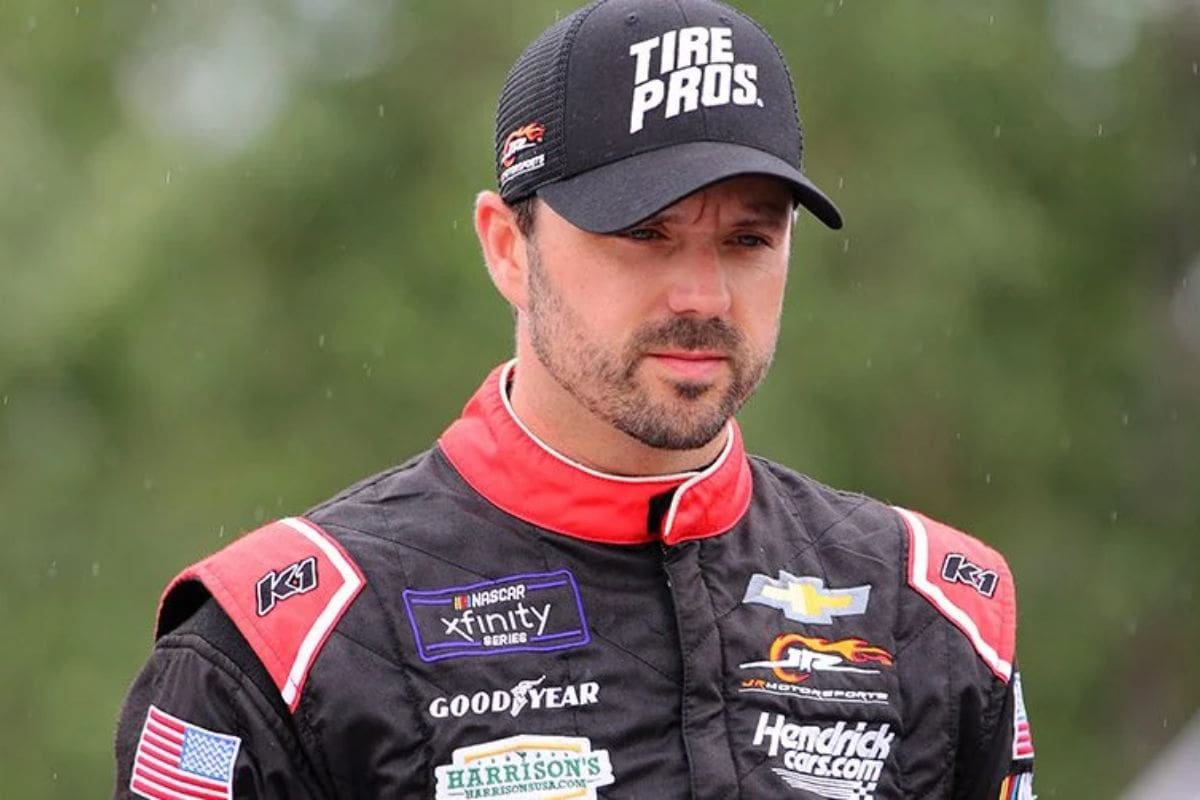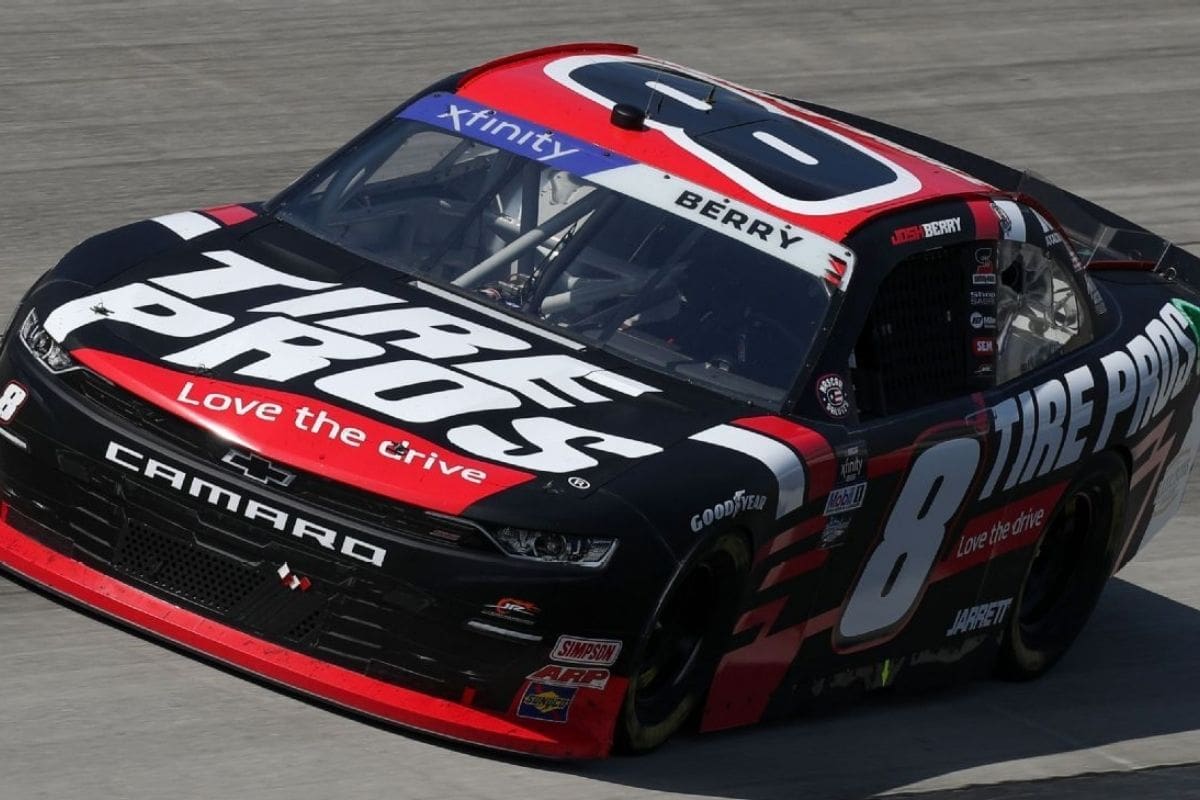Josh Berry’s Talladega Top-10 Finish: Josh Berry’s unforeseen victory at Talladega, marked by an ascent from chaotic mid-race change to a strategic snagging of the checkered flag, showcases more than just an underdog success; it highlights a significant narrative about resilience and adaptability in NASCAR’s unpredictable superspeedway environment. Berry’s performance, particularly following a dramatic airborne incident that would unsettle many seasoned drivers, invites a deeper examination of the psychological and tactical elements at play in motorsport.
Key Takeaways
- Josh Berry’s race at Talladega ended with an airborne crash yet he managed a top-10 position.
- Despite the high-speed crash, Berry slid to sixteenth place, showing significant resilience.
- His calm posture post-crash highlights his composure in high-pressure situations.
- The incident redefined expectations of driver responses in chaotic racing scenarios.
- Berry’s strategic lane change prior to the crash demonstrated his tactical mindset.
Josh Berry’s Wild Ride
Josh Berry’s race culminated in a breathtaking airborne crash, transforming what seemed a certain top-10 finish into a chaotic yet remarkable sixteenth place. The incident, which unfolded on the final lap, encapsulated the unpredictability and peril inherent in stock car racing, particularly at superspeedway tracks known for their high speeds and tight pack racing.
Berry, driving as a rookie for Tony Stewart’s team, was moving through the race’s critical final moments, positioned among the leaders and poised for a strong finish. The dynamics of superspeedway racing, however, are notoriously volatile; the slipstream effect and the close quarters often lead to sudden, dramatic shifts in race outcomes.
The physics of such crashes are a stark reminder of the dangers faced by drivers. At speeds exceeding 200 miles per hour, even minor contacts can escalate quickly, resulting in vehicles becoming airborne.
Berry’s car, propelled by the sheer momentum of the crash, slid across the finish line in sixteenth position. This outcome, while far from what had seemed likely moments before the crash, highlighted the resilience and unpredictable nature of motorsport, where a race is truly not over until the checkered flag waves.

Berry’s Surprising Reaction to the Chaos
Josh Berry’s composed demeanor in the aftermath of Talladega’s dramatic airborne crash was as unexpected as the event itself. In a sport where adrenaline and high stakes meld into a volatile mix, Berry’s calm reflection on the chaos was almost pivotal to the norm. His nonchalant shrug and understated commentary post-race provided a stark contrast to the usual frenetic energy drivers exhibit after such harrowing incidents.
“Ah, nothing really. Um, Yes. Yeah, I moved to that second lane thinking that whenever that happened, I’d hopefully have a little bit more options. And just I don’t know what happened up in front of us, but they got all crossed up, and then we got turned into the wall. sure if I was running wide open into it. We got knocked up in the air, but thankfully we got hit so hard that it actually carried us over to the start-finish line and we actually finished the race, so that was a plus.”-(JOSH)
Analyzing Berry’s reaction, it’s possible to see a strategic acceptance of the inherent risks in high-speed racing. His acknowledgment that he changed lanes reveals a quick, tactical mind that remains clear even in split-second, life-threatening situations.
Moreover, Berry’s ability to handle the event with a casual remark about being carried to the finish line ‘as a plus’ shows a resilience that is critical in motorsports.
Corey LaJoie’s Wild Spin
Corey LaJoie’s wild spin during the final lap at Talladega represented the unpredictability and peril inherent in NASCAR racing. As the race neared its dramatic close, LaJoie found himself involved in a cluster of steel and speed. The chaos catalyzed by Michael McDowell’s defensive action against Brad Keselowski’s advancement had a domino effect, trapping multiple competitors, including LaJoie.
The incident was a vivid tableau of the perils that NASCAR drivers navigate. LaJoie, caught in the turbulent wake of the lead pack’s shuffle, was spun out, his car becoming a mere participant in the broader narrative of the race’s closing lap. His spin, while devoid of immediate physical peril to him, served as a stark reminder of the ever-present risk of high-speed motorsport.
Analyzing LaJoie’s spin, it becomes evident that such incidents are not merely about the cars and their drivers but also about the complex blend of aerodynamics, driver skill, and split-second decision-making.
LaJoie’s Upside-Down Experience
LaJoie’s harrowing experience at Talladega, where his car completed a full aerial rotation before landing upright, vividly highlights the intense physical and psychological demands placed on NASCAR drivers. The dramatic incident involved LaJoie’s #7 car being tangled in a high-speed maelstrom, executing a complete spin and ultimately traversing the finish line in an upright position.
“Today, I was the one upside down. I did a full rotation. So, I did went left side on the ground for a bit. Then it kind of stopped. Then it flipped over, hit the roof and then landed on all fours,” he explained after the race. “And the all-four hit was pretty big. I’m glad I slipped past the start-finish line though.”-(corey)
Analyzing LaJoie’s experience, it becomes clear that the physics involved in such crashes are tremendously complex. The car’s sudden and forceful flipping motion, involving the left side hitting the ground followed by a roof impact, demands a high degree of engineering resilience.
LaJoie’s own recount of the event highlights a mix of relief and mild astonishment at having crossed the finish line despite the chaos.

LaJoie’s First Flip
Despite the harrowing ordeal at Talladega, the race marked a significant debut for the driver, as it was his inaugural experience of flipping in a major race car. LaJoie’s account of the incident provides a stark reminder of the unpredictable nature of motorsport, particularly in high-stakes environments like Talladega. His effortless acknowledgment of the crash belies the stark reality of the danger involved, illustrating a resignation to the inherent risks of racing at such high speeds and in tight quarters.
“Just never could quite get [the car] in the right spot at the right time there at the end, and then you just know you’re just waiting to pile them up. Good thing I tugged, gave the belts a good-old tuggy with about three to go, so I didn’t bounce around as much.”-(Corey)
LaJoie’s preparation for the potential of a crash, evidenced by his extra precaution of tightening his seatbelts moments before the incident, highlights a seasoned racer’s intuition and respect for the volatility of pack racing. This action, likely played a critical role in mitigating more severe consequences during the flip. It’s a confirmation of the foresight and quick thinking that drivers must possess, which often goes unnoticed by the casual observer.

News in Brief: Josh Berry’s Talladega Top-10 Finish
The events at Talladega, encapsulating Josh Berry’s unexpected venture and Corey LaJoie’s dramatic ordeal, exemplify the unpredictability and peril inherent in superspeedway racing.
Berry’s adept navigation through turmoil and LaJoie’s confrontation with physical limits of racing machinery highlight the resilience and strategic skill required in motorsports.
These instances not only showcase individual tenacity but also reflect broader themes of chaos management and adaptation, crucial for success in high-stakes environments.
Our Reader’s Queries
Q: What was the finishing order at Talladega?
A: The six-time NBA champion joined Reddick in Victory Lane. Keselowski took second, followed by Gragson in third, Stenhouse Jr. in fourth, and Bowman in fifth. Notably, both stages of the race remained under green flag conditions throughout.
Q: Who has won Talladega the most?
A: Keselowski, securing his best finish of the season (runner-up) at Texas Motor Speedway, boasts six Talladega wins, the most among active drivers. Notably, he clinched his inaugural NASCAR Cup Series victory at this track in 2009, with his latest Talladega win in 2021.
Q: Why is Talladega famous?
A: Talladega’s construction marks it as NASCAR’s largest and fastest track, noted by NBC Sports. Its founders envisioned attracting audiences with unbridled speed before its 1969 opening, emphasizing the need for velocity to captivate spectators.
Also Read: Daniel Suarez Warns Josh Berry: No More Chats After Richmond Spin!” href=”https://slicksandsticks.com/2024/04/04/daniel-suarez-warns-josh-berry-no-more-chats-after-richmond-spin/” rel=”bookmark”>Daniel Suarez Warns Josh Berry: No More Chats After Richmond Spin!
